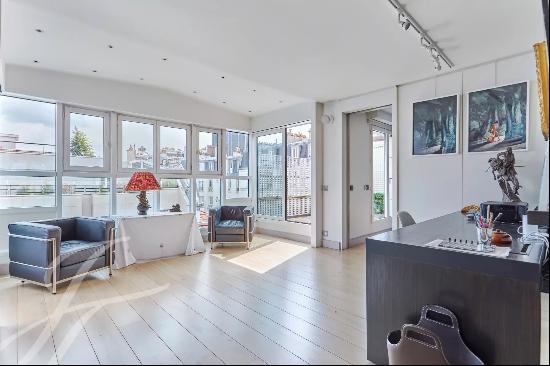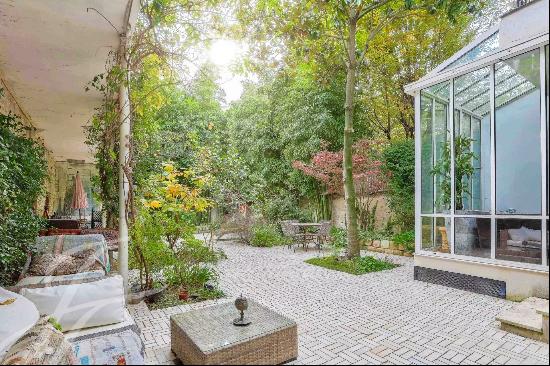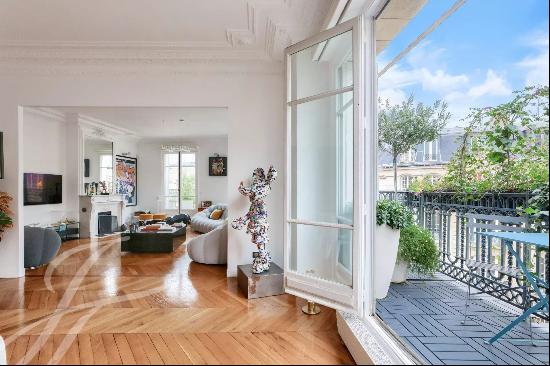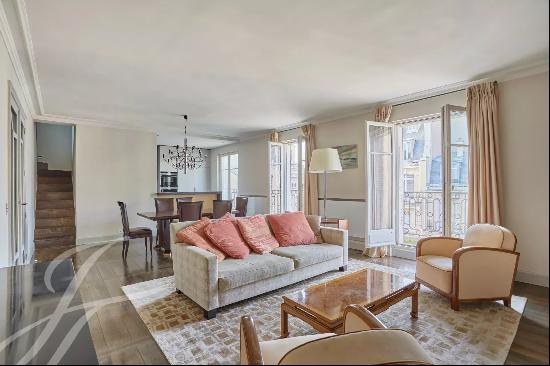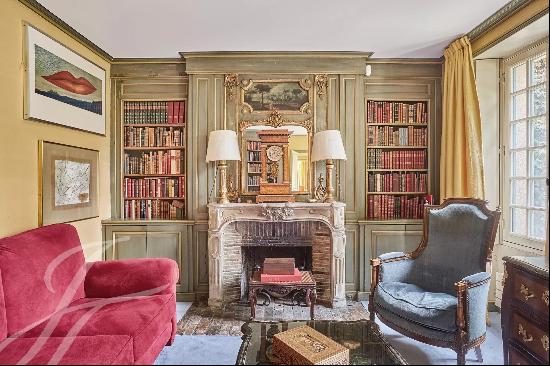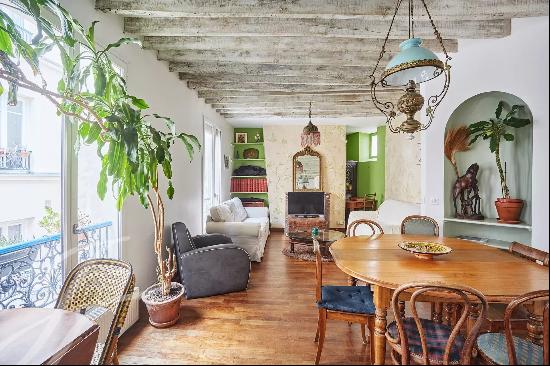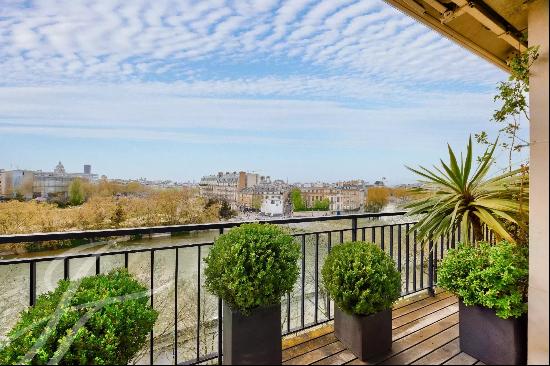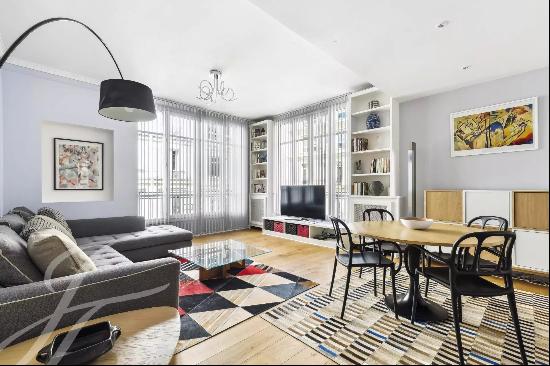
By Gergei Erdei
Deciding on the artwork that you want to live with at home is a matter of personal taste but there are a few rules to follow to make sure that what you choose to hang will work on your walls. For one, it’s important to consider the relationship between the artwork and the architecture. The living room in this 18th-century hôtel particulier in Paris, on the market for €21mn, has Regency panelling and Versailles-style parquet flooring, and a home with this much character can prove challenging when it comes to hanging art.
Rather than complementing the beautiful fireplace or the mirrored panels, the art in this room appears to have been hung on every available surface and as a result, no one piece stands out. It's a great example of the need to really plan how you will “dress” a space. Here, I suggest a few ideas for creating an exquisite art-filled home by choosing the right lighting, frames, wall colours and, of course, art.

Make a statement
Art is usually one of the final things that you add to an interior, but it should be something to think about at the design stage for a room. In the case of the living room in Paris, we need to take into account the wooden panelling, which gives the walls a distinctive colour. Instead of covering these beautifully detailed boiserie panels with small artworks, I would recommend hanging one large painting as a focal point. To me, the living room’s mirrored panels are screaming out to have a huge painting placed in the middle, such as this radiant blue acrylic work by Szabolcs Bozó. It would punctuate the serious period details of the property and the electric splash of blue would shake up the warm earthy tones of the interior.

Choose the right frame
The frame is a chance to give an artwork a final touch. In the case of an interior with many period features such as this, I would go for something minimal as it would separate the art from the wall, creating a point of contrast. Don’t be scared to mix different periods but be careful — it's all about finding the balance. An elaborate Art Deco-style frame, for example, wouldn’t work here but this carved giltwood frame by Newcomb Macklin has an understated antique finish with linear details that give it a timeless feel. Imagine placing a Picasso or even just a subtle line drawing in this . . . Heaven.

Light carefully
I am not the biggest fan of the classic brass picture light, especially in an historic property such as this, where it would give the living room an old school hotel feel. Yet I have to admit that when the lights are down and only your favourite artworks are lit, it does create a sexy, atmospheric ’70s club feel, which is much more my aesthetic.
For lighting art, always use LEDs, because they produce a lot less heat and UV radiation than traditional lightbulbs, which can damage a painting. You also need to think about colour accuracy, which is why it’s worth going for a trustworthy picture light producer so that your paintings don’t end up appearing to have different colours at night. TM Lighting creates professional picture lights that are often used at Frieze art fairs. Its TM Aydin LED Picture Light has an understated finish that would work well with the home’s period features.

Ground yourself
Wall colour is crucial for setting the tone and bringing attention to your artwork. It's also a good way to break up the dominant colour palette of a room, as the mirrored panels do in this property’s living room.
The hôtel particulier’s entrance hall has been painted a cream tone that, to me, doesn’t work with the mood of the property or the art. Don't be afraid to really embrace colour and experiment with stronger shades, especially in the case of a spacious home such as this. A vivid green such as Beverly by Farrow & Ball is often used in galleries as a background for classic paintings, making it a safe choice that would still liven up the antique feel of the property.

Consider wallpaper
Using the example of another room in the hôtel particulier, the study, we can see how classic wallpaper can work as a background to antique painting. If you are looking to freshen up your walls, go for something less obvious and again, don't be afraid to experiment with colour and texture.
As this property has a very refined and classic layout, I would use a contrasting, textured wallcovering such as Mandolino, a white linen by Dedar Milano. Playing to the unexpected with a wallpaper such as this could work well with either classic or modern art pieces as it gives the right amount of edginess as a background without distracting from the art.

Photography: Wanda Martin; Christie’s International Real Estate; Yuki Shima/© Szabolcs Bozó/courtesy of Carl Kostyál; 1stdibs; TM Lighting; Robin Kitchin





